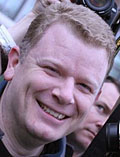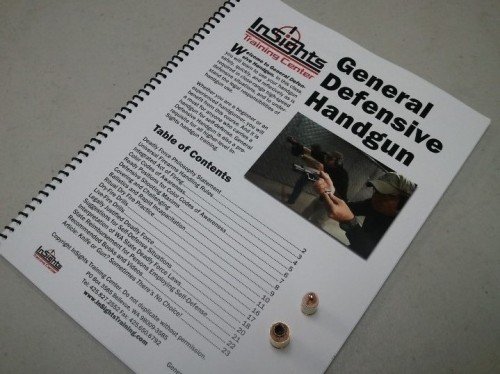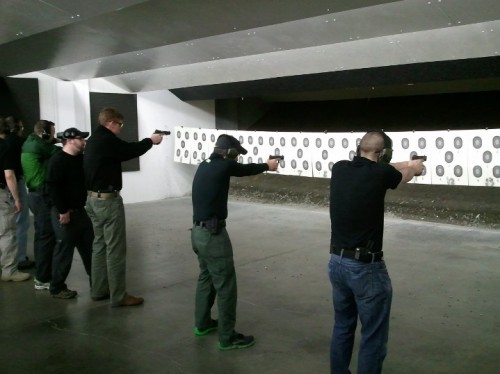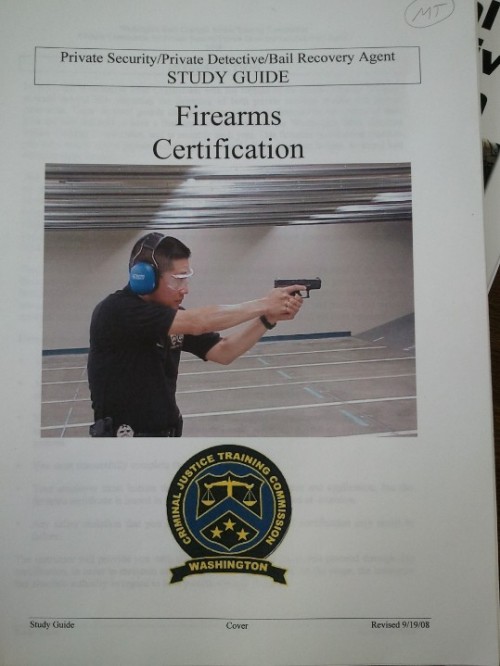 An IDPA Newbie’s Journal
An IDPA Newbie’s Journal
It’s been three months since my first local IDPA match at Renton Fish & Game Club. It was a great match, albeit wet, sloppy and cold – your definition of ‘great’ might differ from mine, but if you live in the Northwest, you have to learn to enjoy shooting in less-than-sunny weather if you want to shoot frequently! I was content with my performance, placing in the middle of the pack among the unclassified SSP shooters (which included two InSights Training Center instructors, I might add, so not exactly a green group). There is always plenty of room to improve; I have been following a bi-weekly practice schedule, but no single training exercise has been bigger until last month’s General Defensive Handgun class at West Coast Armory.
I was not new to the way of the gun when I purchased my M&P last December. If you read my first NWGun article you would know that I carried a Beretta M9 during my Army service. However, the responsibility of being an armed citizen plus a new parent was weighing heavily on me, so I wanted to get some training about the legalities of guns in Washington and the repercussions of using a gun in defense of myself, my family, and my home.
I considered both the NRA’s Personal Protection in the Home course and Insights’ General Defensive Handgun (“GDH”) course. The NRA course was cheaper (half the hours, half the cost), and I assumed that as the NRA, they have a national curriculum that is kept current. On the other hand, the InSights course was a local company with a great reputation from shooters I know (a couple of their comments are included here), and promised a lot more rounds down range. I chose the InSights class and finally took it a few weeks ago.
The two-day course started with a bit of classroom overlap with InSight’s Basic Handgun course, a one-day course offered that same Saturday. Shortly after the introduction and rules of gun safety portion, the groups were split up and spent the rest of the day alternating between WCA’s classroom and the law enforcement bay. At the end of our first day, we were merged back for 45 minutes on the legalities of deadly force.
Although the GDH class required shooting experience and familiarity with your handgun, we started slow. The instructor, Keven, worked on the fundamentals of shooting, slowing building up over the course of the first day to 2-on-1 and 1-on-2 drills. By starting with physics and physiology, he was able to correct some bad habits across the class and start from a known skill level before increasing the tempo. We learned and drilled trigger prep, shooting stance, sight picture & alignment, and immediate action / remedial action responses to weapon failure-to-fires (“FTFs”); we added in drawing from the holster and worked on tactical and speed reloads. Keven, along with his two coaches, walked the firing line, providing hands-on corrections.
One of the refreshing aspects of the InSights course was running a weapons-loaded-and-holstered (“hot”) range. The practical shooting sports are strong proponents of “cold” ranges – where your gun remains unloaded until you are under the direct control of a safety officer (in other words, about to shoot a course of fire). Not only did running a hot range provide for a more realistic training environment, it was also more efficient with 19 shooters in the class. I would argue that it was safer, too, since the first rule of gun safety is “assume every gun is loaded.” I appreciated and enjoyed playing by “adult rules.”
“I’ve taken GDH twice. I really like their teaching style, and the fundamentals they teach are really well thought out.”
The second day sent significantly more rounds down range and drills were more complex and challenging. I particularly enjoyed one drill where Keven would call out one of three hit locations, pushing us to shift targets and engage faster and faster. We also spent time discussing the practicalities of winning a gunfight, from wound ballistics and human physiological & psychological considerations, to challenging the very definition of “winning.” If your core focus is to ensure the health and survival of yourself and your immediate family members, not getting into a gunfight in the first place is an excellent way of not losing!
The final range activity was an “active shooter” drill, where we engaged threatening photo targets (such as OBL or cheesy movie bad guy). We were drilling two shots to each of three zones – the eyes, the cardio-thoracic zone, and the pelvic girdle – all potential fight-stoppers. By shifting from one zone to another after two shots, we were conditioning ourselves to maximize our effectiveness without unloading a bunch of ineffective shots on a target (e.g. he’s wearing body armor) or prematurely stopping to assess before neutralizing the threat. My mental thread was “Threat! – two to the body – two to the head – two to the pelvis – scan for additional threats”.
We were also shouting a series of commands during the final drill, from “Gun! Drop the gun!” while pushing out into position, to “Police! Call the police!” while shooting, to “Look around you – did he hurt anybody else?” while scanning after engaging, to “Stay away from him (pointing) – he’s still dangerous!” while holstering. The round count soared here, and it was satisfying to see them all hit home with greater accuracy after two days of instruction and drilling.
“Insight’s legal coverage of shooting topics was one of the best I have heard.”
We concluded the class with the Washington Criminal Justice Training Commission’s Firearms Certification exam. This state-issued test documented our training for the future. If I am ever involved in a self-defense shooting, that will be a part of my defense – I made an informed decision about the need to employ lethal force based on my training and experience.
Overall, I thought the class was an excellent value for the money and a good use of my weekend. The amount and quality of information was outstanding, the instructors patient, knowledgeable, skill, and funny, and my personal skill increase was a nice bump. I have incorporated some of the drills (both live and dry) into my weekly training regime. All in all, if you use a pistol for self-defense, are a competitive shooter, or just want to send your shooting skills to the next level, I highly recommend InSight’s General Defensive Handgun course.
Jeremy Snook is a resident of Seattle, Washington and works in the video games industry.




Nice report!! Sounds like a great class!! I agree that a hot range is more efficient and I also like being trusted to have a hot gun. I have done defensive handgun classes where you were hot all the time too. But in action pistol competitions I think its safer to have a cold range. I have heard of some IDPA matches being held “hot” but not very many. As an IDPA SO I have seen people draw their gun and “play” with it while waiting their turn to shoot. In a training class you have instructors telling you and everyone else what they expect of you safety wise. And all of you in the class know that. In a Match, as an SO I have no idea how much or even if the people in my squad have had any kind of training at all. If I could only have a squad of people I just took a “hot” class with then I wouldn’t mind everyone being hot. But as it is right now, having 4-14 people in my squad and not knowing if they have had any training at all, I like having everyone cold.